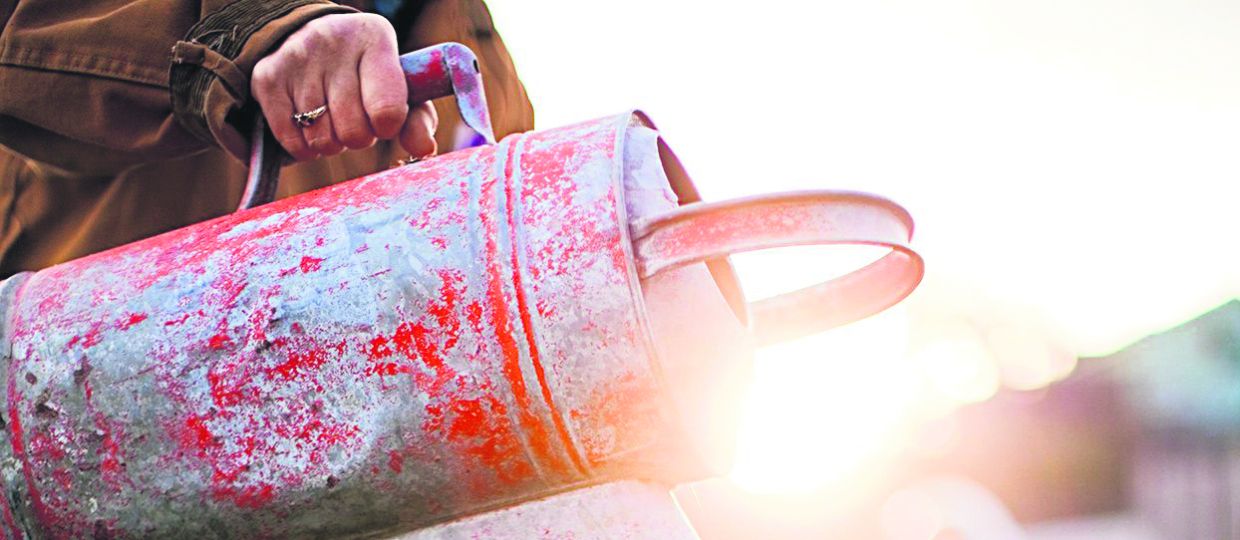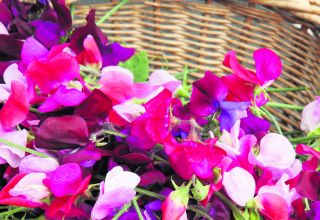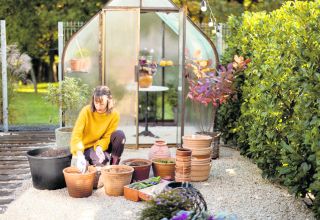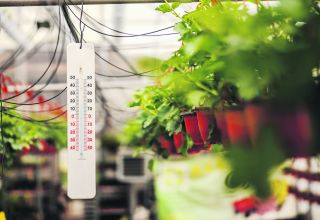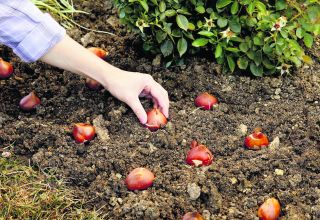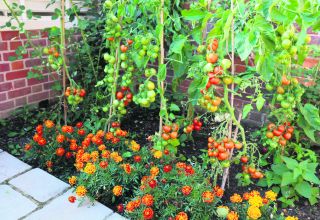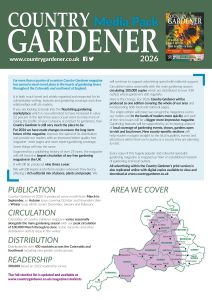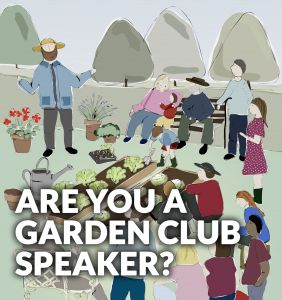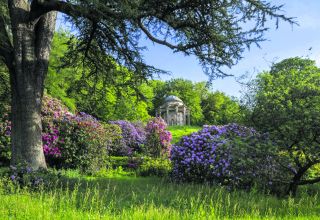It’s time to roll up your sleeves and get on with jobs to do in the garden in August. Many gardeners will be wanting to extend the flowering season as long as possible after a period of rapid plant growth and make the most of the garden to entertain family and friends. Any garden can start to look a little dusty and dry now, with leaves falling naturally around the borders. It’s best to gather them up to help prevent pests and disease building up. The last official month of summer is also the perfect time to enjoy your garden while it’s still at its best. Children are on school holiday, lawns are in full use, and there’s plenty of delicious fruit and veg to fill your dinner plate. As the traditional month for summer holidays, you may find it difficult to leave the garden for too long but the August garden can look after itself for a couple of weeks. Many parts of the fruit and vegetable garden will be ready to harvest the fruits of your labour this month. In the flower garden top-heavy bulbs and late flowering perennials need staking and shrubs, perennials and climbing roses that have finished flowering can be cut back. Evergreen hedges looking shaggy after their burst of summer growth should be trimmed back and topiary sculpted to shape. As well as the on-going dead heading, weeding and mulching, it’s also the time to tie in raspberries and replace any straggly lavender bushes. Keep an eye out for pests and diseases like clematis wilt, mildew, ear wigs, ants, scarlet lily beetles and vine weevils, whilst also fending birds off your fruit. Don’t forget to take some time out to enjoy your garden and just spend some time being in it too.
1. Water on your mind
Watering should be at the forefront of your mind this month. Trying, where possible to be sustainable and eco-friendly, supporting the local wildlife. You may find that your water butts are looking a little low as May and June have been very dry. Greywater is a great alternative -relieving pressure on the mains water supplies. With the knowledge that parts of the UK could run dry in as little as 20 years’ time, there’s no time like the present to start conserving water. Greywater is water that has been lightly used. You can use water from paddling pools, baths and showers, sinks, washing machines and other kitchen appliances.
2. What to sow
August is the perfect time to start sowing root vegetables and salad leaves like rocket and land cress so you can have tasty treats come winter.
Plant veggies like cabbage, broccoli and Brussel sprouts. Ready for a winter harvest – just in time for Christmas dinner!
Get planting new strawberries as soon as they hit the shelves in the garden centre using soil that hasn’t grown any strawberries in for at least three years.
3. Start planting autumn-flowering bulbs and corms
Don’t limit bulbs to just spring-flowering varieties such as daffodils and tulips. There are bulbs, and also corms (which are very similar to bulbs), that flower in summer and autumn too.
Autumn-flowering bulbs and corms include crocus, colchicum and cyclamen. As they flower in autumn, there are only a few weeks to plant them before they start to flower – so we advise planting as early as possible. They can stand the summer heat and will see your garden through into autumn.
These need well-drained soil in a sunny position. As a rough guide, plant each crocus and colchicum bulb three times its own depth measured from top to bottom. Use either a trowel or a special bulb-planting tool.
Cyclamen do not like to be fully buried, so plant them with their tops peeking out of the soil. If you have heavy soil, such as clay, drop a handful of horticultural sand into the bottom of the hole. This improves the drainage to the crucial rooting area.
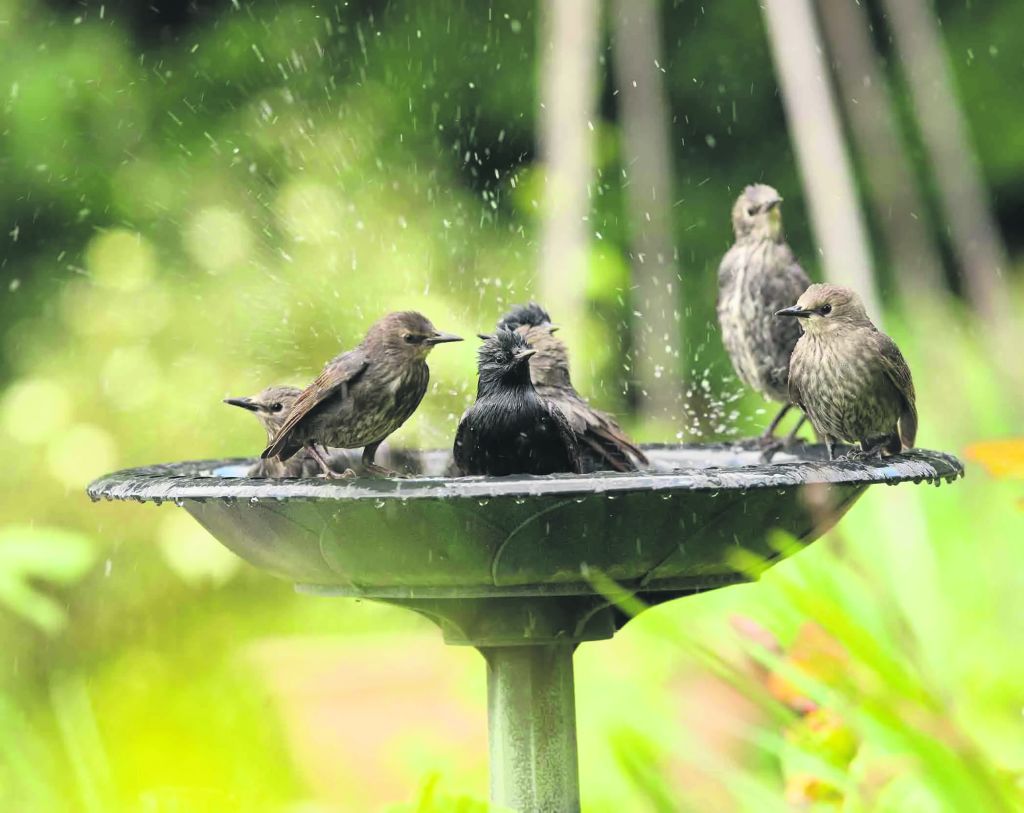
4. Keep the birds happy
Towards the end of the month, take a look at your hedges. If your garden birds have left their nests, you can start pruning and trimming before your hedges stop growing for the year. Provide a place for birds and other wildlife to drink and bathe with a wildlife table or create your own using a spare pot or lid.
Also keep an eye on any birdbaths you have outside. The water can quickly evaporate in warm weather or even start sprouting algae. Clean them out regularly and top them up with fresh water, to help keep your feathered friends cool when the weather heats up.
5. Check on what needs feeding
Feed containerised plants with a liquid fertiliser once a fortnight. There are three ingredients – nitrogen, potassium and phosphorus. Nitrogen helps plants develop strong stems and foliage; potassium supports growth of flowers and fruit; and phosphorus develops the root system.
Fruit and vegetables, as well as flowering perennials, climbers and shrubs, will want a high potassium feed, often sold as tomato food. Most other plants you’ll want to feed at this time of year will favour a multi-purpose feed. In most cases it’s a bit late for a high nitrogen feed as the leafy growth it encourages will be vulnerable in the colder weather in a couple of months’ time.
6. Add support
With heavy blooms and ever-growing stems, plants such as dahlias and gladioli will need staking, if you’ve not done this already. This extra support will not only prevent damage,but discourage ground pests from attacking low-lying plants.
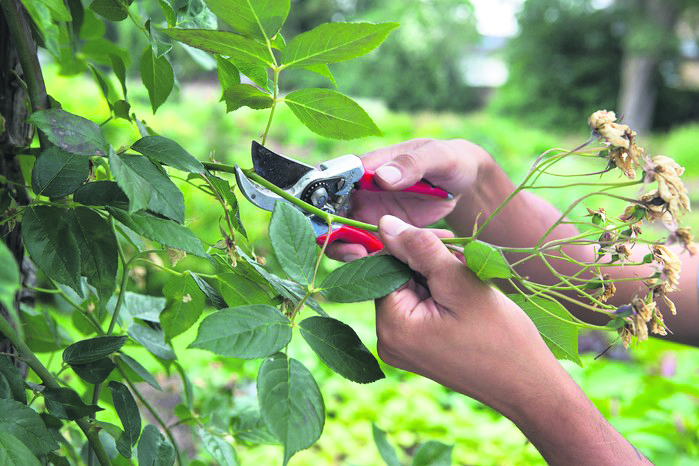
7. Keep on deadheading
You’ll need to deadhead regularly to keep your plants flowering into autumn. Fresh blooms not only look good, but continue to feed bees, butterflies and hoverflies, which are essential to a garden’s wellbeing. Sweet peas will be keen to set seed, so it’s important to deadhead them daily, if you can. Just don’t forget to keep up with their watering regime and add a weekly plant feed. While for perennials that have finished flowering, cutting them back will ensure that they remain healthy and that your beds will look tidy.
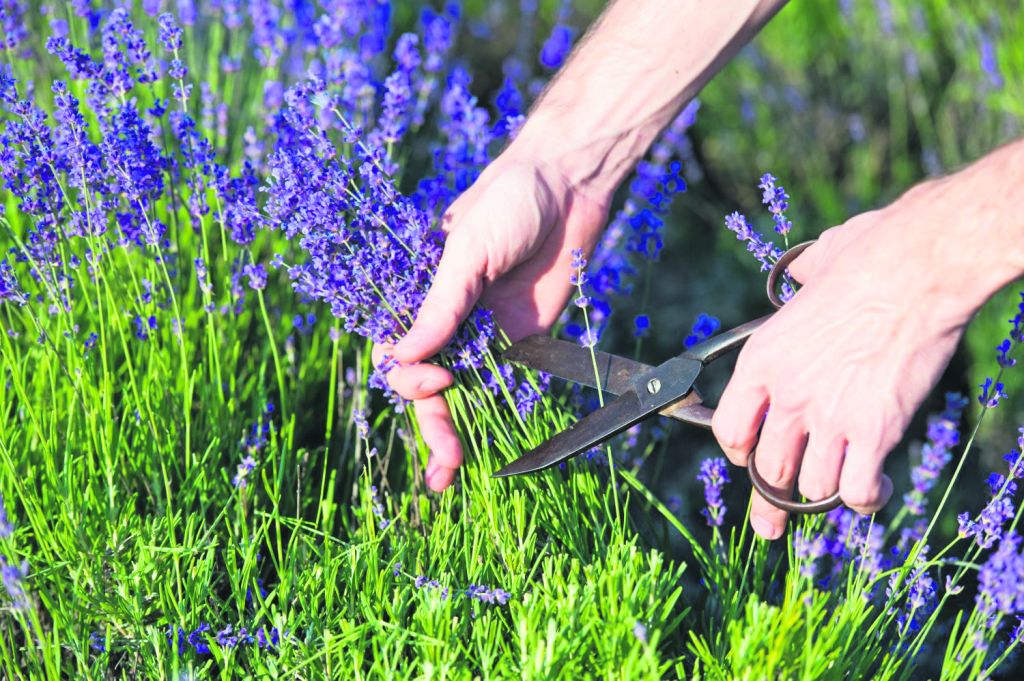
8. Cut lavender
Once flowered, stop lavender from becoming leggy by cutting it into a compact shape. However, you don’t want to cut it too far back, as new flowers can’t grow on old wood. As an added bonus, you can use the cut flowers around the home, by creating lavender pouches to scent your drawers or pillow cases.
9. Deal with fruit trees
Now that gooseberries have been harvested, pruning should be carried out to ensure that the plant remains healthy. By creating a ‘goblet’ shape, this will allow as much ventilation as possible to circulate throughout the plant. Start by removing the inner branches of the plant, which will reduce the rest of the plant to about six leaves per branch. Doing this will encourage fresh new shoots to grow.
10. Look out for trouble
Cabbage white butterflies will currently be eyeing up your brassicas to lay their eggs, which is why it’s important to check your crops regularly and remove any eggs or pests you find. You can also net your crops and use brassica collars when planting out, to help reduce the chances of pests.
Heat, humidity, and rainfall can cause the onset of blight in potatoes and tomatoes. So, if you see any signs of the fungal infestation, remove the affected plants from the site or burn them to stop it getting out of hand. If you do catch potato blight at an early stage, remove affected foliage but leave the tubers in the ground, as they may be unaffected. And to reduce blight, encourage a crop rotation system, and try to use blight resistant varieties.

11. Lawns need high summer TLC
Lawns can look pretty barren at this time of year, especially if there are long periods of intense sun and no rain. With hosepipe bans in place in some areas, it’s best to be as sustainable as possible and put the lawn lower down on your jobs to do in the garden priority list.
Brown lawns at the end of a hot dry summer may look sad, but will always recover in the autumn.
If you do want to have a green lawn, focus on watering in the evening when the ground remains moist for longer.
Another valuable tip is to allow longer breaks between cuts, and set the mower blades high – the grass will stay greener for longer, with the added bonus of the nectar-rich flowers of Bellis perennis (lawn daisies) and clover being able to grow. Both are a favourite of many bees.
If you have a wild- flower lawn, don’t be tempted to cut it too early. Let the seeds of your grasses and flowers ripen and disperse before you cut and collect the clippings in early August.
12. Stay on top of weeds
One year’s seeding makes seven years weeding, so the old gardening adage goes, so keep on top of the weeds. So take a ‘weed walk’; taking a turn around the garden with a hoe once a week to keep weeds down.
Dry, warm weather is the best for making sure the weeds sizzle and die in the summer sun. No need to pick them up – just hoe them out and leave them to dry in the sun, thereby returning the nutrients to your garden.

